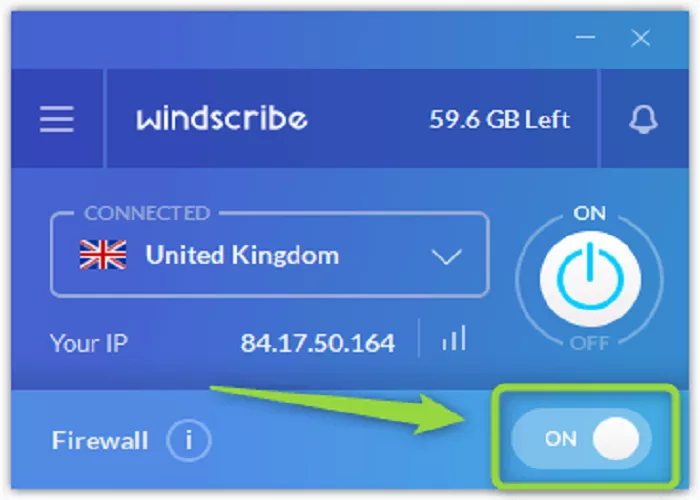Windscribe VPN is a popular choice for users seeking enhanced online privacy and security. One of the critical features many users look for in a VPN is a “kill switch,” which ensures that your internet connection is automatically cut off if the VPN connection drops, preventing accidental exposure of your real IP address. In this article, we will explore whether Windscribe offers a kill switch and how it compares to traditional kill switch features found in other VPN services.
What is Kill Switches in VPNs
A VPN kill switch is a security feature designed to protect your privacy by blocking all internet traffic if the VPN connection unexpectedly drops. This prevents your device from reverting to its default internet connection, which could expose your real IP address and other sensitive information. Kill switches are particularly important for users engaging in activities where privacy is paramount, such as torrenting or accessing restricted content.
Windscribe’s Approach to Kill Switch Functionality
While Windscribe does not offer a traditional kill switch, it provides a more robust solution known as the Windscribe Firewall. According to Windscribe’s official documentation, the firewall is built into their Windows and Mac applications and blocks all connectivity outside of the VPN tunnel to ensure there is zero chance of any kind of leak, including DNS, IPv6, and WebRTC leaks. Unlike a traditional kill switch, which is reactive and activates only after the VPN connection drops, the Windscribe Firewall is proactive and continuously monitors your connection, blocking all non-VPN traffic at all times.
This approach ensures that if your VPN connection drops, no data will leak through your default internet connection, providing a higher level of security than a traditional kill switch. Windscribe’s firewall feature is available on their Windows, Mac, and Linux applications, and users can enable it through the application settings.
How to Enable Windscribe’s Firewall
To activate the Windscribe Firewall on your device, follow these steps:
1. Open the Windscribe application on your Windows, Mac, or Linux device.
2. Navigate to the settings menu and select the “Connection” tab.
3. Under the “Firewall Mode” section, choose your preferred mode:
- Automatic: The firewall is enabled when you connect to a Windscribe server and disabled when you disconnect.
- Manual: You have full control over when the firewall is turned on or off.
- Always-on: The firewall is always active, blocking all internet traffic unless connected to a Windscribe server.
4. Save your settings and ensure the firewall is active before browsing the internet.
For a visual guide on setting up the firewall, you can refer to Windscribe’s official tutorial video: Windscribe Firewall Explained.
Advantages of Windscribe’s Firewall Over Traditional Kill Switches
Windscribe’s firewall offers several advantages over traditional kill switches:
- Proactive Protection: The firewall continuously monitors your connection, blocking all non-VPN traffic at all times, whereas traditional kill switches are reactive and only activate after a VPN connection drops.
- Comprehensive Leak Prevention: The firewall prevents all types of leaks, including DNS, IPv6, and WebRTC leaks, ensuring your real IP address is never exposed.
- Enhanced Security: By blocking all internet traffic unless connected to a Windscribe server, the firewall provides a higher level of security and privacy.
Limitations of Windscribe’s Firewall
While Windscribe’s firewall offers enhanced security, there are some limitations to consider:
- Device Compatibility: The firewall feature is currently available only on Windows, Mac, and Linux applications. Users on other platforms may not have access to this feature.
- Manual Configuration: Users need to manually configure the firewall settings, which may be challenging for less tech-savvy individuals.
- Potential Connectivity Issues: Enabling the firewall in “Always-on” mode may cause connectivity issues if the VPN connection is unstable or frequently disconnects.
Comparison with Other VPN Services
Many VPN services offer traditional kill switches as part of their security features. These kill switches are designed to disconnect your internet connection if the VPN connection drops, preventing data leaks. However, as mentioned earlier, Windscribe’s firewall provides a more comprehensive and proactive solution to this issue.
For example, services like ExpressVPN and NordVPN offer traditional kill switches that activate after a VPN connection drops. While these features provide an additional layer of security, they may not offer the same level of protection as Windscribe’s firewall, which continuously monitors and blocks all non-VPN traffic.
Conclusion
In conclusion, while Windscribe does not offer a traditional kill switch, its built-in firewall provides a superior solution for ensuring your online privacy and security. By proactively blocking all non-VPN traffic, the firewall offers enhanced protection against data leaks and unauthorized access. Users seeking a VPN service with robust security features may find Windscribe’s firewall to be a valuable tool in safeguarding their online activities.


